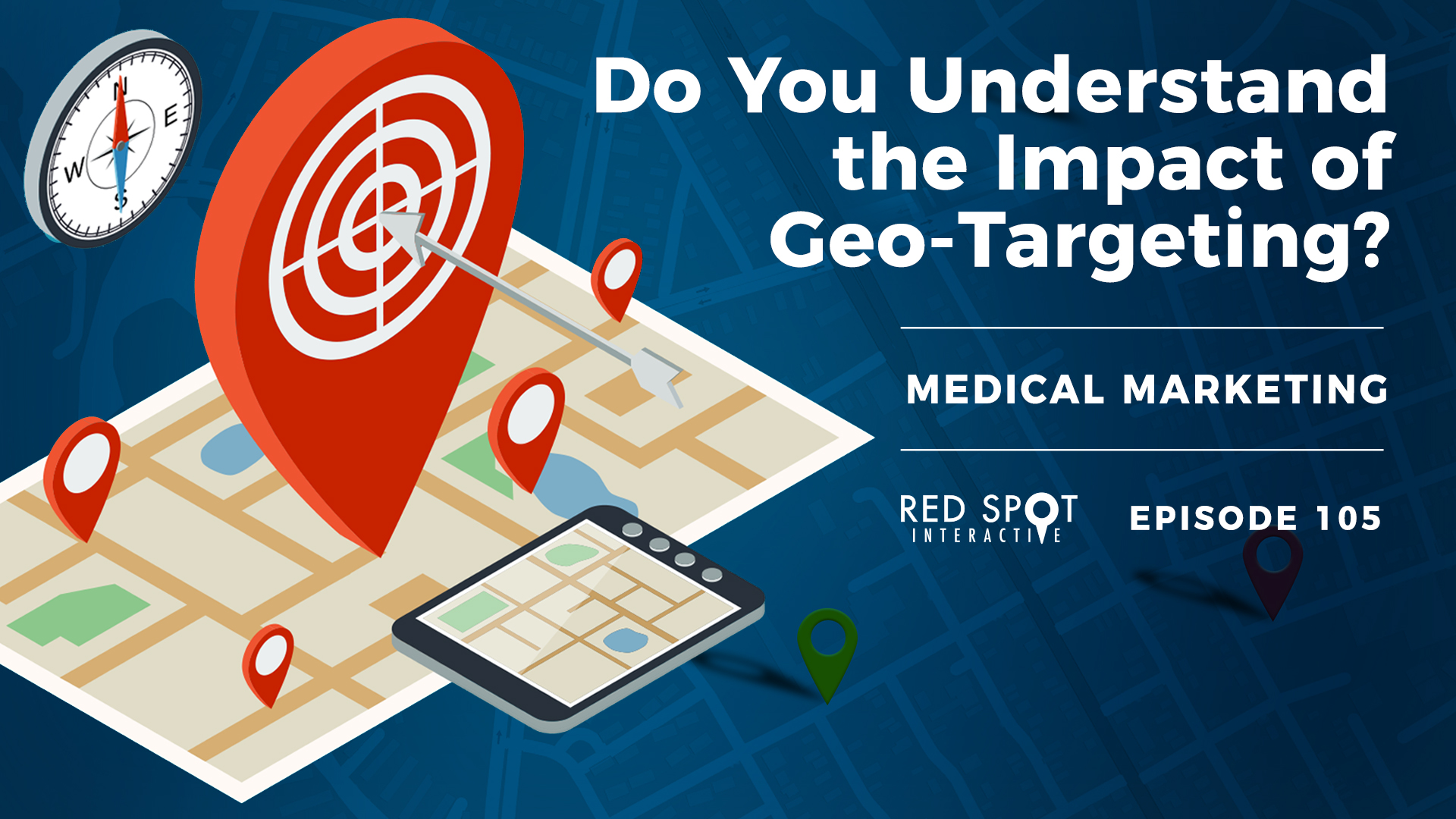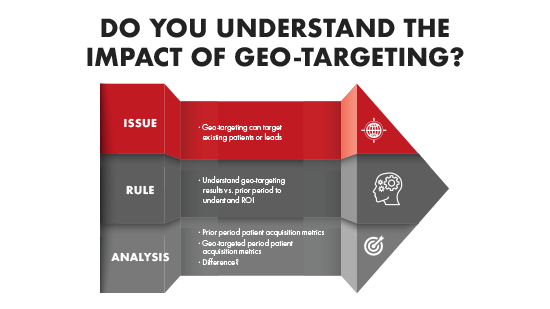How You’re GEO Targeting
When you go to GEO target, you can either target for your brand or target for patient acquisition. These are two completely different things. To target your brand is to bring brand awareness to those around you. It means solidifying your practice’s image and ensuring that your audience knows your core values and how you hope to come across. To target for patient acquisition means you’re going to target to get patients in the door. This can include special pricing, highlighting one of your services, or more. These two different kinds of GEO targeting will affect two different audiences within the same location, so choose wisely.
Measuring Your Metrics
When GEO targeting, you’re likely targeting a group of patients who are already existing clients. This means you may not see a huge jump in your patient acquisition and you’re likely not going to see any correlation with your revenue. The proof is in your metrics for the current period over the previous period. This is where you’re going to see if the GEO targeting you’re doing is actually working.
Remember, GEO targeting is giving you endless exposure to a certain region based on the location in a patient’s phone while they search on search engines. This is going to benefit your business exponentially, you just need to make sure you’re marketing the right aspects of your practice and measuring the correct metrics.

















